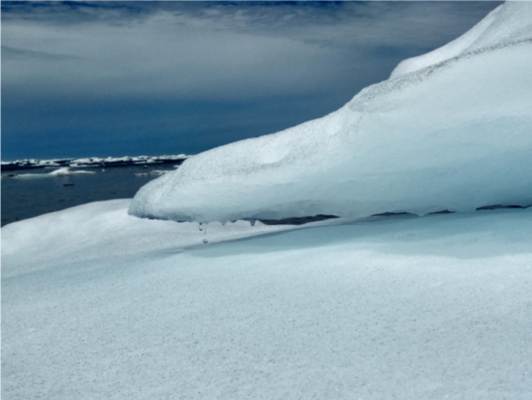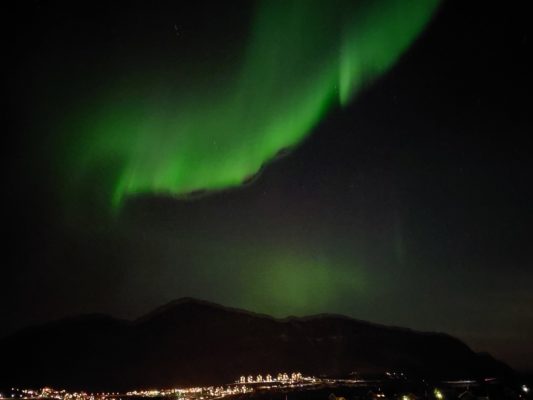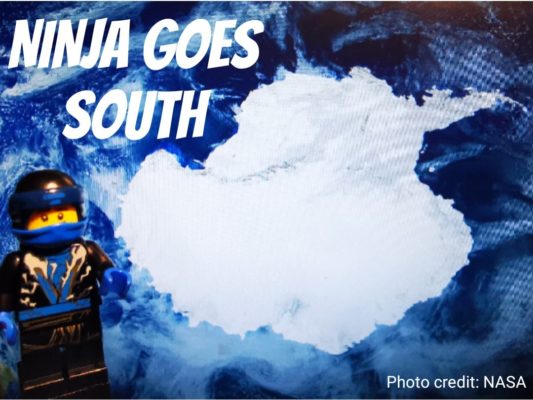It’s no secret that the Arctic is warming faster than the rest of the planet, but why? Polar Amplification (often called Arctic Amplification) is the mechanism at play. In this week’s blog, we find out about its origins and why it happens. Early Discoveries In 1969, Russian scientist Mikhail Budyko and US scientist William Sellers discovered independently that the increase in greenhouse gases comb ...[Read More]
CryoAdventures – Three months in Nuuk, the world’s northernmost capital!
I have just returned from nearly three months in Nuuk, the capital of Greenland, where I was doing my PhD placement at Asiaq Greenland Survey. Read on to find out what science I got up to… everything from mapping mountain glacier snowline change to avalanches! How do you map glacier snowline evolution? During my PhD research placement, I was working at Asiaq Greenland Survey in their Hydrolo ...[Read More]
The EverDrill project: shedding light on the interior of a Himalayan debris-covered glacier
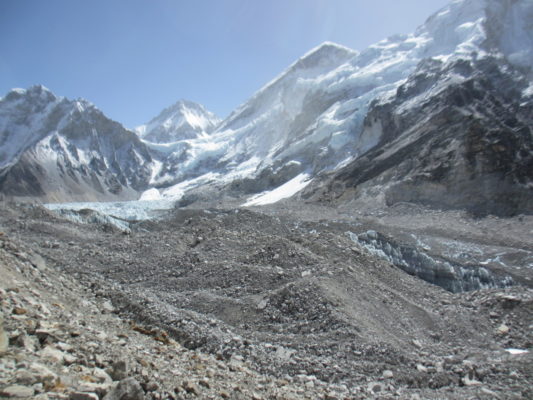
We know that glaciers are actively responding to climate change, but what is happening on the inside? The conditions within a glacier strongly influence its behaviour, but the deep and dark depths of a glacier are difficult to access – we know very little about this remote environment. The EverDrill project (2016 – 2019), funded by the UK Natural Environment Research Council, aimed to fill this kn ...[Read More]
Will the ice break out? – a story from the farthest north ice trails
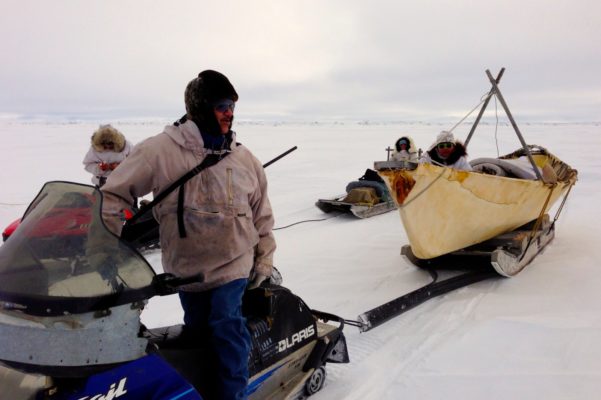
"For over two decades, the sea ice group at the University of Alaska has worked with the community of Utqiaġvik, establishing an integrated observing network. This network includes local observations, a coastal radar system to monitor ice conditions, an in-situ mass balance site monitoring environmental change such as ice growth and snow cover, and the mapping of community sea ice trails." In thi ...[Read More]
Cryo-adventures: Ninja goes south – Life and science onboard an icebreaker in the Weddell Sea (Antarctica)
Hello there! I’m Ninja – a curious little LEGO-figure who doesn’t know much about the cryosphere, but who’s learning! Maybe you read about me in the blogpost by ice sheet modeler Petra Langebroek a few years ago? She brought me to the ice-core drilling camp called EASTgrip, on top of the Greenland icesheet. Together, we wrote a photo-novel to tell her sons and all of you about life and science at ...[Read More]
Women of Cryo V: Women and Glaciers in the Chilean Andes (Part I)
Women make up 50.8% of the worlds population, yet fewer than 30% of the world’s researchers are women. Of this percentage, BAME (Black Asia and Minority Ethnic) comprise around 5%, with less than 1% represented in geoscience faculty positions. The divide between women in the population and women in STEM needs to be addressed. Through a series of blog posts we hope to raise the voice of women in th ...[Read More]
Climate change and the Cryosphere – With ice we are also losing a piece of our cultural heritage: a glaciologist’s perspective
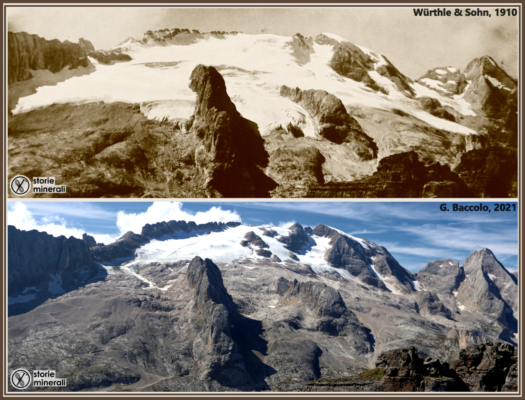
Glaciers are shrinking and disappearing in many regions of the Earth. Did you know? I am joking of course. We are flooded with news talking about this. The decline of glaciers has manifold and severe consequences and is one of the most powerful icons of climate change. Here I want to talk a little bit about one of the less talked about impact of glacier decline: the loss of culture and knowledge r ...[Read More]
Of Polar Bears and Sediment Cores: a Scientific Cruise in the Arctic
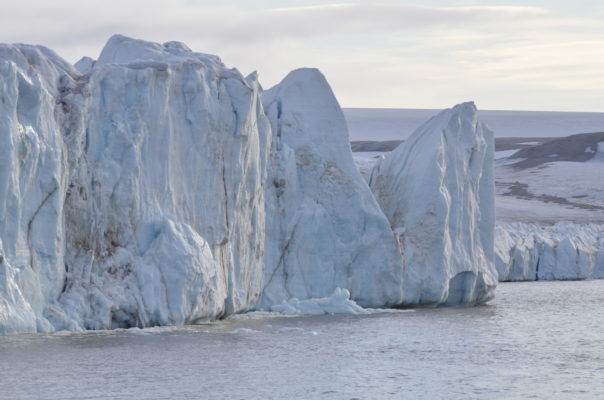
Through the scientific excursion part of the University Centre in Svalbard (UNIS) course ‘Arctic Late Quaternary Glacial and Marine Environmental History’, a few lucky grad students got to visit Nordaustlandet, northeastern Svalbard. This is the story of our research adventure in this beautiful, remote part of the Arctic. On a bright and early morning in late August, a group of 16 students, 4 prof ...[Read More]
Vernagtferner: My First Encounter with an Alpine Glacier

In July 2021, together with a group of MSc students from the University of Bremen, I set off from the flat plains of Northwest Germany and embarked on a journey to the mountainous regions of Austria, with the Vernagtferner Glacier as our final destination. My aim was to learn as much as I could in the glaciology field course offered by the university. During my student days in Brazil, glaciers fil ...[Read More]
Cryo-Adventures – Hunting snow algae in the Alps
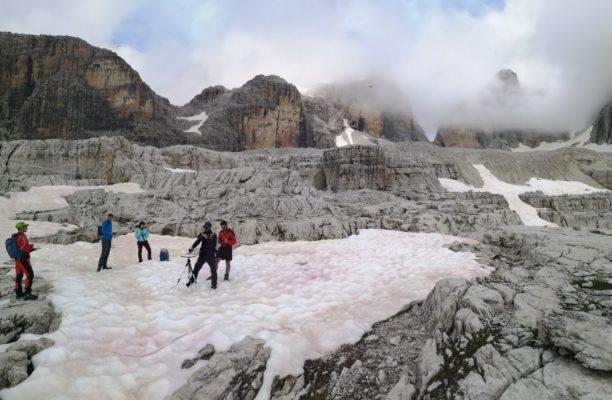
We are used to think of algae as marine or lacustrine organisms, but they are actually able to thrive also on the cryosphere. In a previous post, we learnt how snow algae live and reproduce on snow. Now we will explore how and why scientists study snow algae, and how social media can be used for identifying new study areas. Snow algae in the Alps Snow algae in the Alps have been overlooked or conf ...[Read More]

